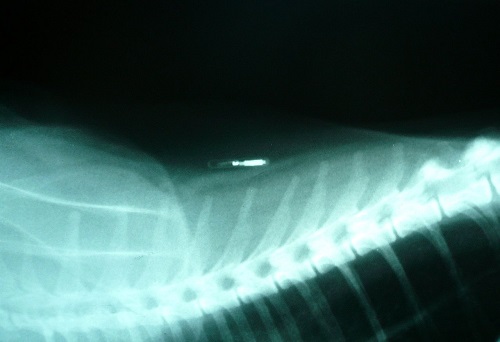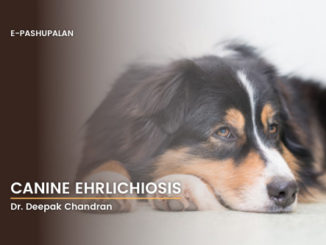Introduction
In today’s era, pets are like family members not just an animal. To make this bond stronger pets also need a permanent unique identity as we humans have our IDs. Thus, microchipping is one of the best ways to ensure permanent identity and tech based care to pets. It is a trend in abroad but nowadays gaining popularity in India and cities like Bangalore making it mandatory in pet dogs.
Microchip
Pet microchip is a small, electronic chip enclosed in a biocompatible glass and not larger than grain of rice. Each microchip carries a unique identification number that is detected using a handheld microchip scanner and is available at very reasonable cost.
 Microchip implantation
Microchip implantation
As microchip comes preloaded in a sterile applicator and usually implanted below the skin at the back of the neck between the shoulder blades. This make the procedure simple, short and no more painful than a vaccination shot. Therefore, no sedation or general anaesthesia is required. Moreover, microchip implantation is useless until it is being registered in microchip database with relevant contact information of owner and kept updated. Once registered, owner receives a registration certificate with chip ID and recovery service contact information.
How pet microchip works
Pet microchip is a small, electronic device that uses passive radio-frequency identification (RFID) technology and inserted below the skin. When a microchip scanner of correct frequency is passed over the skin of microchip implanted pet. The scanner emits radio waves to activate the microchip and then microchip send radio frequency signals back to scanner with unique ID number. After that scanner interprets the radio waves and displays the unique ID number on screen. The pet registry company uses the ID number to retrieve the pet owner’s details from the pet recovery database.
Potential benefits of microchip implantation
Identification and reunion
Pet microchips are reliable and permanent source of identification. Unlike collars, tattoos and tags, they can never fades, break or fall-off. Microchipping creates a permanent bond between owner and pet. When pets get lost or separated from their owner during natural disaster, then microchips are scanned to retrieve the pet related details and helps veterinary doctors or animal centers to reunite pets with their families.

International travel
Microchipping is one of the many requirements of pet’s international travel. Several countries including Hong Kong, Germany, New Zealand, and Singapore have made microchipping compulsory for pets with updated details before entry.
To certify pet’s pedigree
Microchips are necessary to register with any Kennel club to certify pet’s pedigree.

Side effects of microchipping
Microchipping is considered very safe in pets but there are some side effects also which include:
- Migration of the microchip from its original implantation site.
- Failure of the microchip, hair loss, infection, swelling, and tumor formation are some rarely reported problems.
The benefits of microchipping in pets definitely far outweigh potential risks.
Conclusion
- Microchipping in pets ensures permanent identification that never fades, stolen or compromised.
- Microchip implantation is useless until it is being registered in microchip database with relevant contact information of owner and kept updated.
- The benefits of microchipping in pets far outweigh potential risks.






Be the first to comment